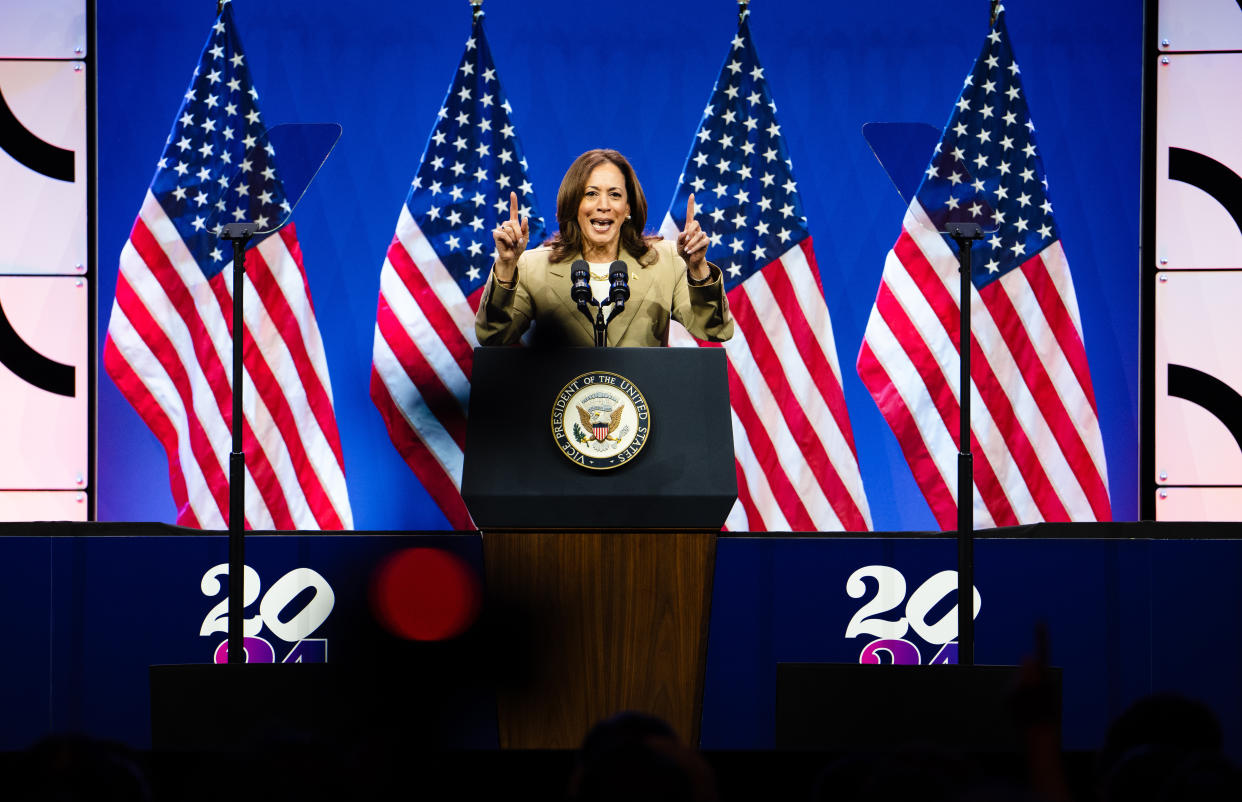Harris Outdoes Biden in 2 State Polls but Has Her Own Weaknesses

- Oops!Something went wrong.Please try again later.
Just before a gunman fired at Donald Trump at a Pennsylvania rally Saturday, we concluded a new set of New York Times/Siena College polls of Pennsylvania and Virginia. While the polls were completed before the shooting, they still offer context about the state of the race.
—
Five years ago, Joe Biden was the “electability” candidate — the well-liked, moderate Democrat who promised to beat Donald Trump and had the poll numbers to back it up.
Sign up for The Morning newsletter from the New York Times
The polls don’t back up Biden’s electability case anymore. In the latest New York Times/Siena College polls on Monday, he trails by 3 percentage points among likely voters in must-win Pennsylvania, while he leads by a mere 3 points in Virginia — a state he carried by 10 points four years ago.
Not only does Biden trail Trump, but he also fares worse than Vice President Kamala Harris, the only other Democrat tested in the poll. She ran about 2 points ahead of Biden, trailing by 1 point in Pennsylvania while leading by 5 points in Virginia.
A 2-point edge for Harris over Biden isn’t much, but she’s polled ahead of him in Times/Siena polling before. She outran Biden in Times/Siena polling of six battleground states last November, as a sliver of young and nonwhite voters backed the vice president but not Biden. That’s the source of her relative advantage again.
Before going further, there’s one big caveat: Harris is not currently a candidate for president. While she may be a well-known figure, voters haven’t heard her message or agenda as a hypothetical presidential candidate in 2024. They haven’t seen her on a debate stage. And they haven’t heard the attacks against her, either. If she became a candidate, her standing could easily change — whether for better or worse.
But for now, Harris’ polling edge is plausible. For one, it’s mostly a reflection of Biden’s weakness. Far from a political juggernaut, Harris has a favorability rating of just 42% in Pennsylvania and 48% in Virginia, the poll finds. She may fare better among young voters (age 18 to 29) than Biden, but most of them say they have a negative view of her. And her ratings among Black and Hispanic voters are tepid for a Democrat, even if they’re better than Biden’s.
Like Biden, Harris polls worse than the result of the 2020 presidential election; she polls worse than the Democratic advantage on party identification in the two states; and she’s far behind the Democratic senators running for reelection (Bob Casey leads by 8 points in Pennsylvania, and Tim Kaine by 17 points in Virginia). She even runs behind traditional Democratic benchmarks among young, Black and Hispanic voters. She runs only ahead of the president.
Harris’ edge probably isn’t attributable to the fallout from the debate. She fared better than Biden in our polling in November, long before the debate, and neither the Virginia nor Pennsylvania results are quite as bad for Biden as some might have expected after the debate or in light of our last national poll. In fact, his 3-point deficit in Pennsylvania is the same shown in our last poll in the state, taken in May.
And despite Biden’s weakness, the data contains a few faint echoes of his old electability pitch. He fares better than Harris among voters older than 65 and among white voters without a college degree, two Republican-leaning constituencies that gave Biden just enough strength to put him over the top four years ago. He does better among self-identified conservatives as well.
These relative strengths for Biden can just as easily be interpreted as signs of weakness for Harris. Either way, there’s an argument that Biden’s enduring (if only relative) appeal among older and white working-class voters puts him in a better position than the top-line figures suggest. After all, winning young and nonwhite voters is supposed to be the “easy” task for a Democrat. Winning white working-class voters and seniors, however is what’s supposed to be “hard.” If Biden has already done the hard part, perhaps his path to additional gains is relatively straightforward.
Of course, just because it’s supposed to be easy for a Democrat to fare well among young and nonwhite voters doesn’t mean it will be easy for Biden. The polling shows it certainly hasn’t been easy for him this cycle. It doesn’t figure to be any easier after the debate.
c.2024 The New York Times Company

